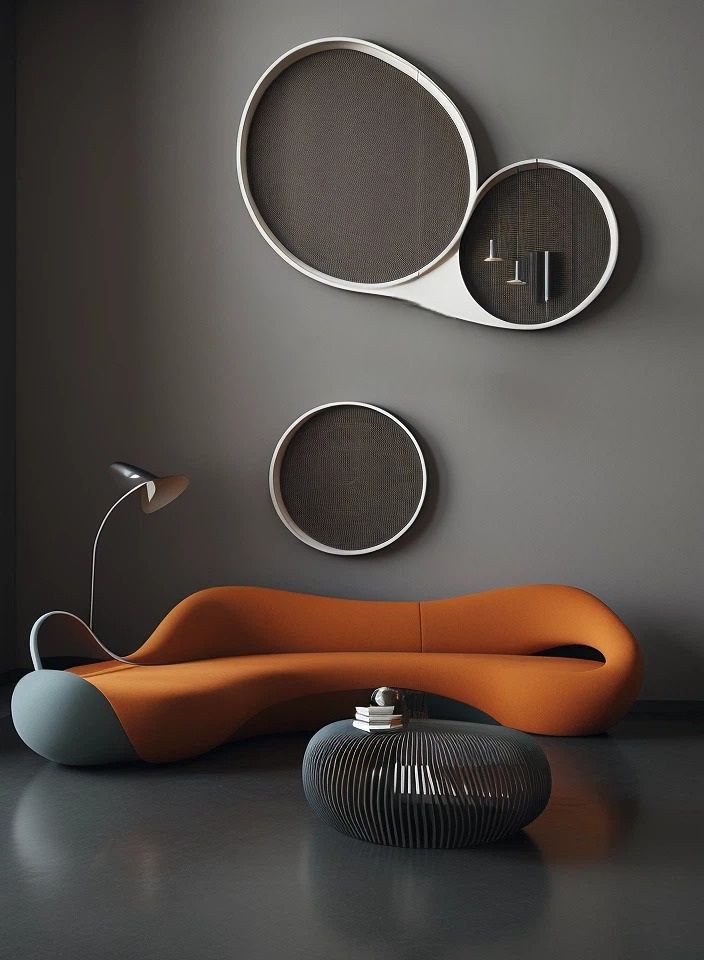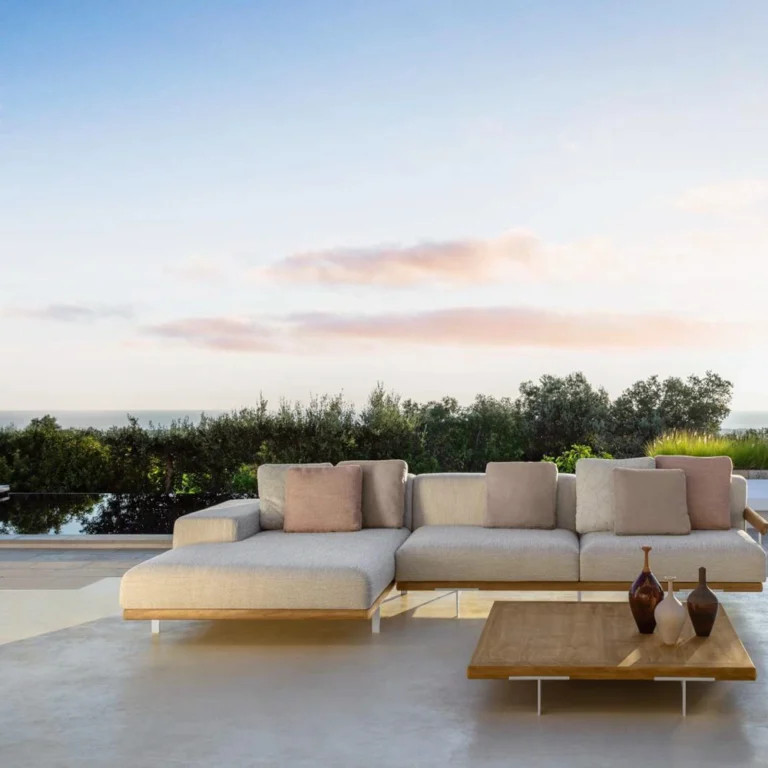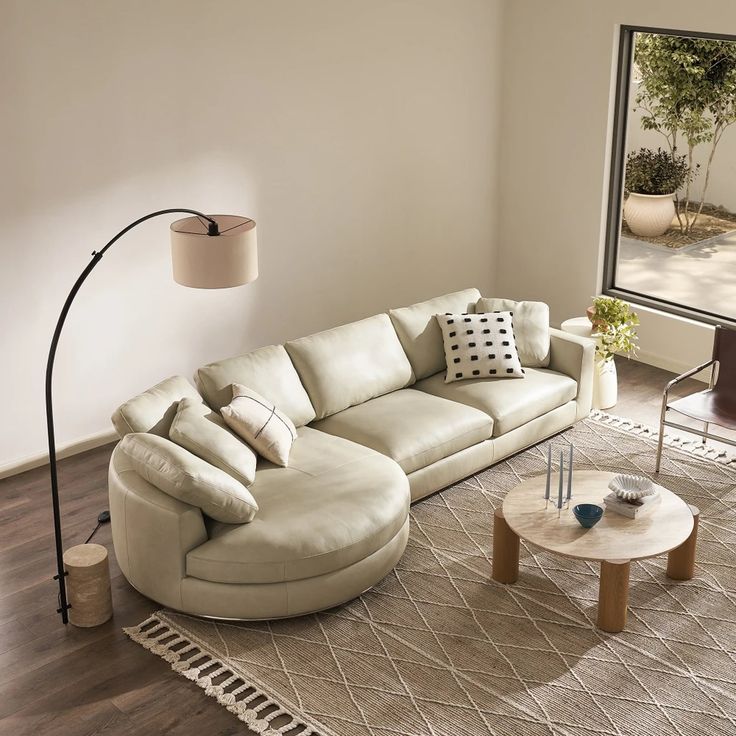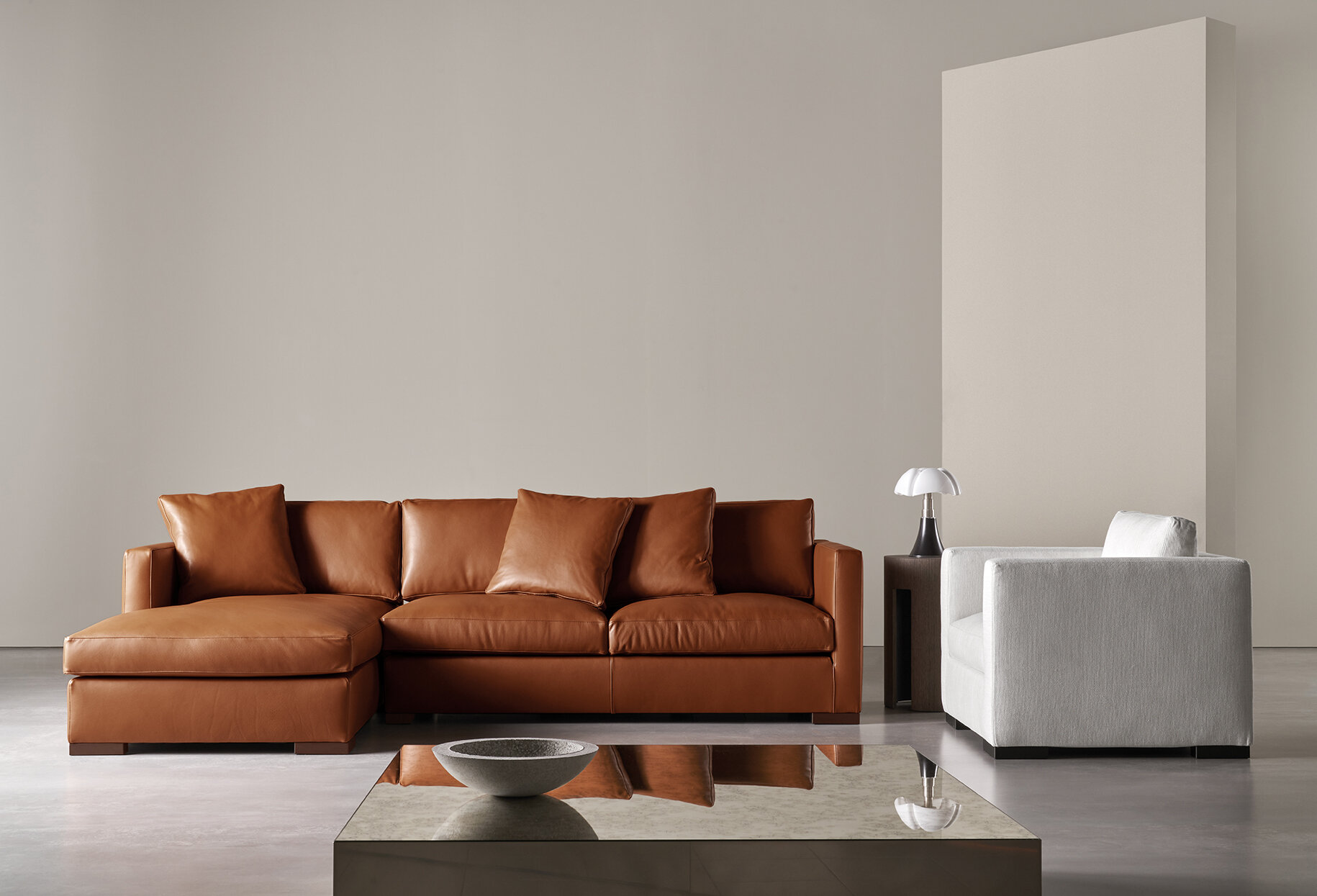Choosing the right bed frame is about more than just holding up your mattress – it sets the tone for your entire bedroom. From the minimalist bed look of low-profile platforms to the opulent presence of a draped canopy, bed bases come in a stunning variety of forms. Whether you’re drawn to a black bed frame in a modern loft or a white queen bed frame for a serene master suite, understanding the different bed base types will help you make a stylish and smart choice. In this ultimate guide, we’ll explore 10 popular types of bed bases – what they are, who they’re best for, design implications, and functional considerations – and highlight how luxury Italian brand Flou interprets each with some of their most stylish models.
Platform Beds: Low-Profile Minimalism with Modern Appeal
A platform bed is defined by its low-profile frame and the absence of a box spring. The mattress rests on a solid platform or slats, often quite close to the ground. This simple construction offers excellent support and a sleek, contemporary look. Platform beds typically have clean lines and minimal ornamentation, making them the go-to choice for a minimalist bed aesthetic or a mid-century modern vibe. They often highlight materials like natural wood or metal, since the frame itself is on display without a bed skirt. The platform design inherently creates a low bed frame height, which can make a room feel more open and modern.
Who it’s best for: Platform beds are perfect for modern design lovers and anyone looking to achieve a Zen, uncluttered atmosphere. They suit small bedrooms or urban apartments well, because eliminating the box spring reduces bulk (both visually and literally). Sleepers who prefer a firmer feel might appreciate the solid support. However, those who have trouble getting up from low heights or who love very ornate, traditional beds might find platforms too spare. Platform beds also pair well with futons or thinner mattresses for a true Japanese-inspired look.
Design & style implications: With their pared-down look, platform beds put materials front-and-center. A rich walnut wood bed frame platform can bring warmth to a minimalist room, while a lacquered or metal platform in black or white gives a more industrial or gallery-like vibe. Platform beds usually have no footboard (or a very low one), which reinforces their open feel. Bedding can be tucked in for a tailored look or left to drape for a more casual aesthetic. Keep in mind that without a tall headboard, you might use bold artwork or an accent wall to create a focal point above a platform bed.
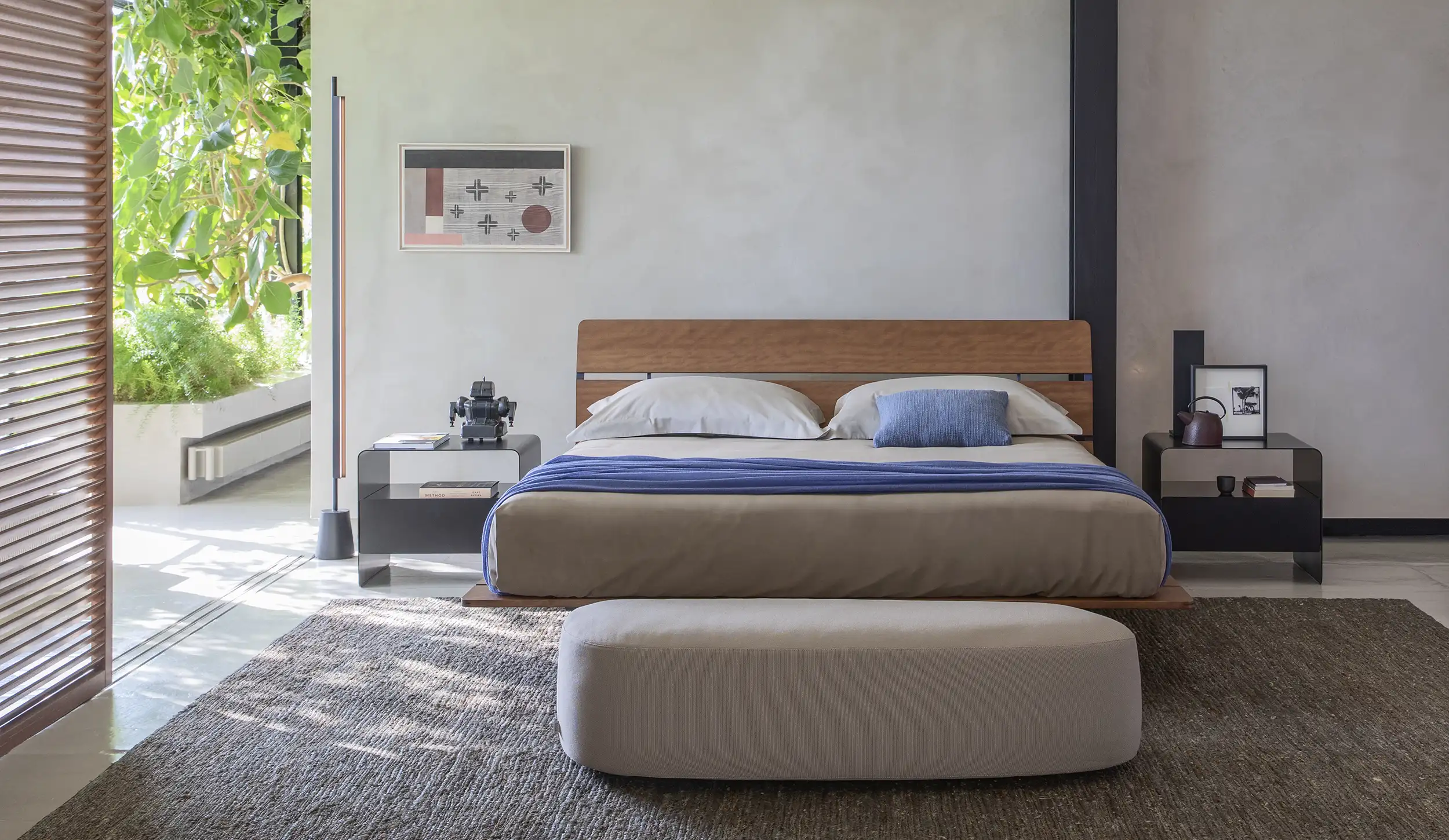
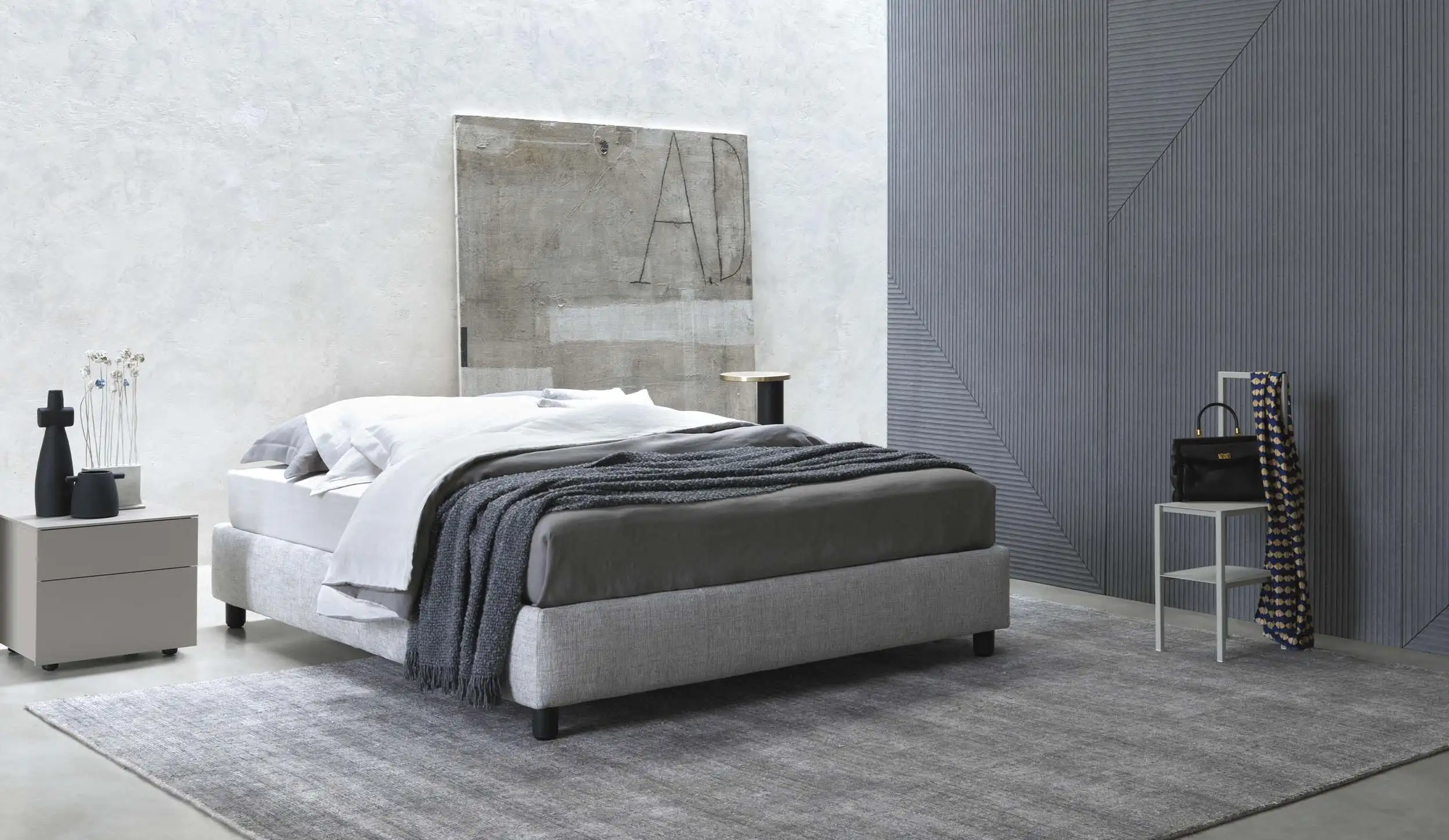
Sleigh Beds: Timeless Curves and Classic Elegance
In delightful contrast to the strict lines of platforms, sleigh beds bring an element of classic romance to the bedroom. A sleigh bed is characterized by a distinctive curved headboard and footboard that resemble the front and back of a horse-drawn sleigh. Traditionally crafted in rich woods and often displaying beautiful panels or even carvings, sleigh beds have a substantial presence and an old-world charm. The headboard is usually higher than the footboard, both curving outward, giving the bed an elegant silhouette (and a cozy cocoon feeling for the sleeper).
Who it’s best for: Sleigh beds are ideal for those who love traditional or transitional decor – think fans of French Provincial, Victorian, or classic American styles. If your bedroom is spacious and you want your bed to be the obvious focal point, a sleigh bed can deliver that wow factor. They pair beautifully with antique furnishings, chandeliers, or detailed molding, but can also anchor an eclectic mix of old and new. However, sleigh beds are bulky – the sweeping curves take up more floor space, so they aren’t the best for very small rooms. Also, if you prefer a very modern or minimal look, a sleigh bed’s ornate form might be too heavy visually.
Canopy Beds: Draped Drama and Dreamy Retreats
There are only a few beds more romantic or eye-catching than a canopy bed. By definition, a canopy bed has four tall posts (one at each corner) connected by crossbeams or an overhead frame, creating a canopy structure. You can drape fabric over the top and sides, or leave it bare as an open frame – either way, a canopy bed instantly turns your sleeping area into a sheltered haven. Historically, canopy beds were used for practical reasons (warmth and privacy in large, drafty rooms), but today they’re prized for the luxurious ambiance they lend a space. There is something inherently theatrical about a canopy bed: it draws the eye upward and can be dressed up in countless ways, from gauzy white curtains to rich velvet panels.
Who it’s best for: Canopy beds are perfect for those who want their bed to feel like a special destination – if you’ve ever dreamed of a princess canopy or a regal court bed, this is your category. They work best in bedrooms with high ceilings; the vertical posts need room to breathe (and you’ll want space so the canopy doesn’t visually overwhelm everything else). Designers often use canopy beds in master suites to create a sense of grand luxury or in spacious children’s rooms for a bit of fantasy. If you love the idea of changing your decor, canopy beds give you an extra canvas (the fabric) to play with – you can swap out drapery seasonally or as your style evolves. On the downside, canopy beds are large and can be expensive. They’re not ideal for low-ceiling rooms (where they can make the space feel cramped), and the frames can collect dust if draped heavily, so they may require a bit more upkeep.
Design & style implications: A canopy bed inherently makes a bold statement, but you can tailor its style. A sleek metal canopy with no drapes reads modern and minimalist (almost like a four-poster without curtains), whereas a richly carved wood canopy with ornate finials and embroidered canopy curtains screams traditional opulence. There are also minimalist canopy designs now – slim black steel frames that create a geometric outline, perfect for a loft or a trendy boutique-hotel look. If you choose to use fabric, the type will define the mood: linen or cotton for breezy, resort-like vibes; sheer netting for a light, romantic feel; heavy brocade or velvet for luxurious, cozy enclosure (great in cold climates). Canopies also allow creative lighting – think fairy lights woven atop the frame or a chandelier hanging inside the canopy. Just remember that the bed is the star in this scenario, so surrounding furniture should complement rather than compete (low dressers, simple nightstands, etc., often work well).
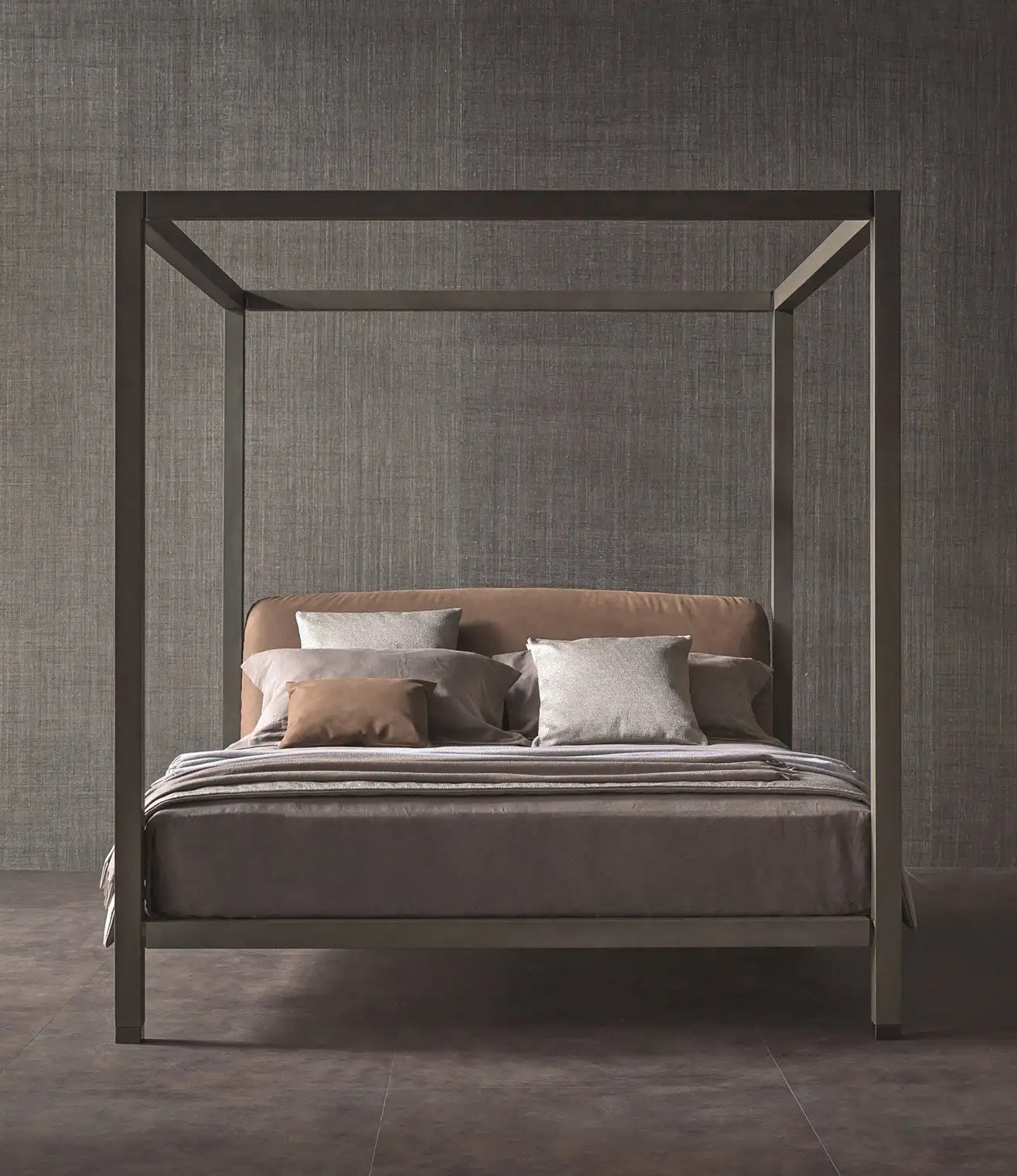

Panel Beds: The Classic Framework for Any Bedroom
Moving from the lofty canopy to something more down-to-earth: panel beds are arguably the most common traditional bed frame type. A panel bed has a headboard and footboard made of flat panels (wood or upholstered) and uses side rails to hold the mattress, often requiring a box spring or foundation for support.
Who it’s best for: Panel beds are a great all-purpose choice. If you have a medium to large bedroom and want a bed that feels substantial but not overly ornamental, a panel bed is a safe bet. They work with many decor styles: a sleek lacquered panel bed can go modern, a shaker-style oak panel bed leans farmhouse or Mission, and an upholstered panel bed with tufting fits transitional or glam styles. Because panel beds come in all sizes (twin through king) and many designs, they can suit guest rooms, master bedrooms, or even kids’ rooms (imagine a classic white panel bed for a child – timeless!).
Design & style implications: Panel beds offer a framework around which you can build the bedroom’s look. The headboard is usually the main decorative element – it might have a molded top edge, cut-out shape, or inset panels. Footboards can be high (matching the headboard height) or low profile. Some people opt for a panel bed without a footboard (sometimes called a sleigh-panel hybrid or just a headboard bed) for a more open feel at the foot; this is good if you’re tall and don’t like your feet confined. The need for a box spring means the bed will sit taller – it gives a traditional bed height where you might use a bed skirt to hide the foundation. Materials range widely: all-wood (from pine to ornate mahogany), metal frame with wood panels, or fully upholstered panels. An upholstered panel bed is a popular variant now – imagine a sturdy wood bed frame, but the headboard (and sometimes footboard) is padded and covered in fabric or leather for a softer look. These bring together the classic form of a panel bed with the comfort of an upholstered bed.
Upholstered Beds: The Allure of the Soft Frame
One of the biggest trends in bedroom design is the upholstered bed. Unlike wood or metal frames, upholstered beds wrap the frame (headboard, footboard, side rails) in padding and fabric or leather, creating a cushioned look and feel. In other words, the structure may be wood/metal, but it’s fully covered by upholstery, turning what could be a hard frame into a soft frame that’s inviting to the touch. Upholstered beds often feature additional styling like tufting, nailhead trim, or decorative stitching, borrowing cues from the world of furniture (think of a sofa, but as a bed). They can range from sleek and smooth to plush and tufted, and they instantly add a sense of comfort and luxury to a bedroom.
Who it’s best for: If you love to lounge in bed – reading, watching TV, working on a laptop – an upholstered bed is a dream come true because you have a built-in padded backrest. No more propping up a dozen pillows against a wooden headboard! These soft frames are also great for families (no sharp corners for kids to bump into) and for anyone wanting a polished, tailored bedroom look. Upholstered beds fit well in contemporary, transitional, and even glam design schemes. They’re the top choice in many high-end hotels, which speaks to their combination of comfort and style. On the flip side, upholstered beds do require a bit more care – the fabric can attract dust or stains, so you’ll want to keep them clean (most have removable covers or are treated for stain resistance). If you’re allergy-prone, fabric might hold more dust than wood. And stylistically, if you prefer a very minimal or natural look, a big upholstered headboard might feel too “decorated” – some people still love the grain of real wood showing in their bed frame, which upholstery would hide.
Flou’s take: It’s fitting to talk about Flou and upholstered beds, because Flou pioneered the modern upholstered bed in 1978 with its iconic Nathalie bed.
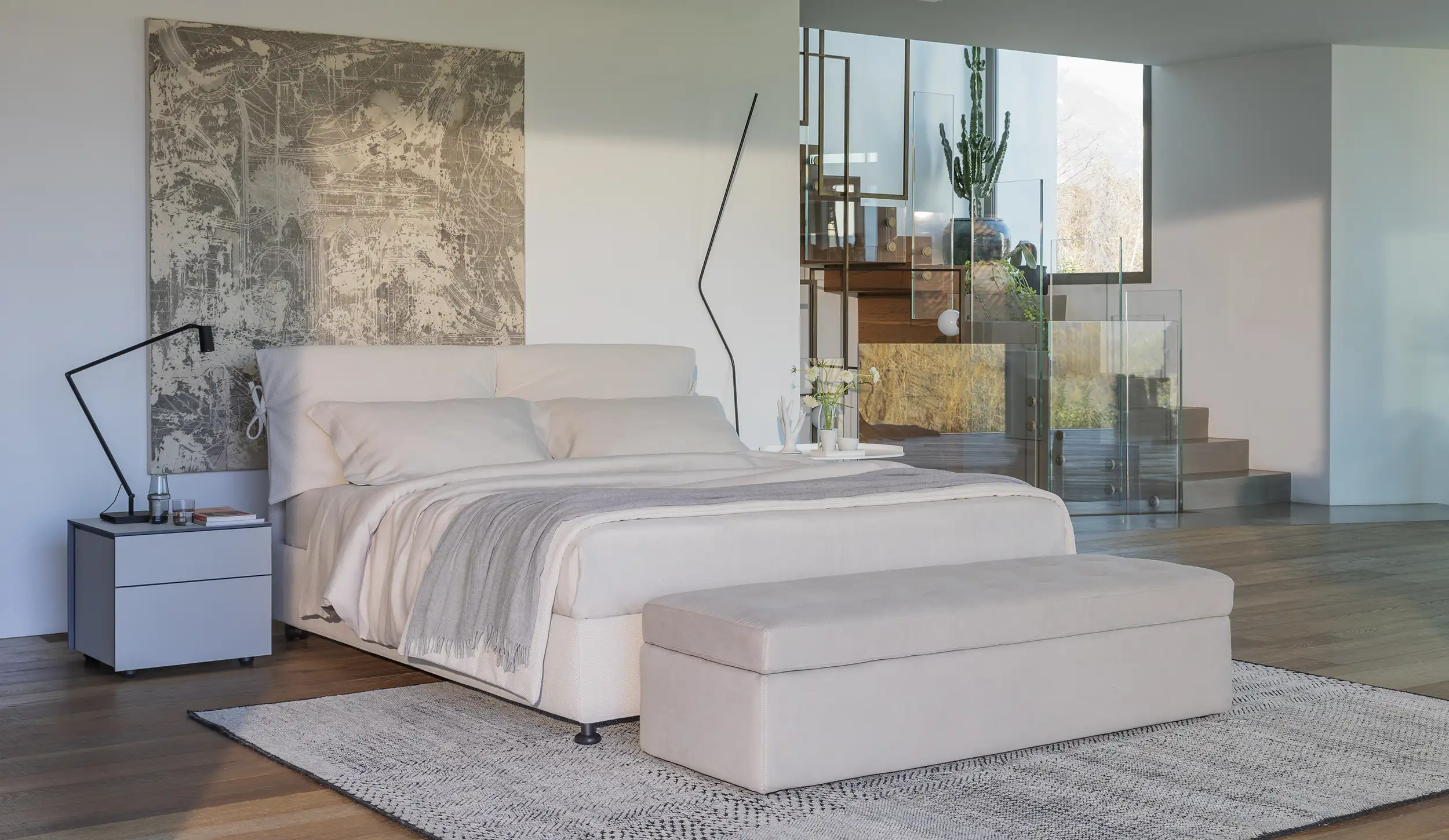
The Nathalie bed, designed by Vico Magistretti, was “the very first modern upholstered bed with completely removable covers” and has since become an icon. In fact, Nathalie is often credited with starting the trend of fully upholstered beds in residential design. It features a softly padded headboard with delightful loose bows on each side – an unmistakable detail that has become its trademark – and a padded bed base. Magistretti’s idea was to combine comfort, beauty, and practicality. This was revolutionary for maintenance – you could remove and wash or change the fabric covers like you would with slipcovers on a sofa, keeping the bed fresh or updating its look. Nathalie even introduced an adjustable-angle headboard version for more lounging comfort, and clever attached pillow covers that can flip forward to cover your pillows during the day
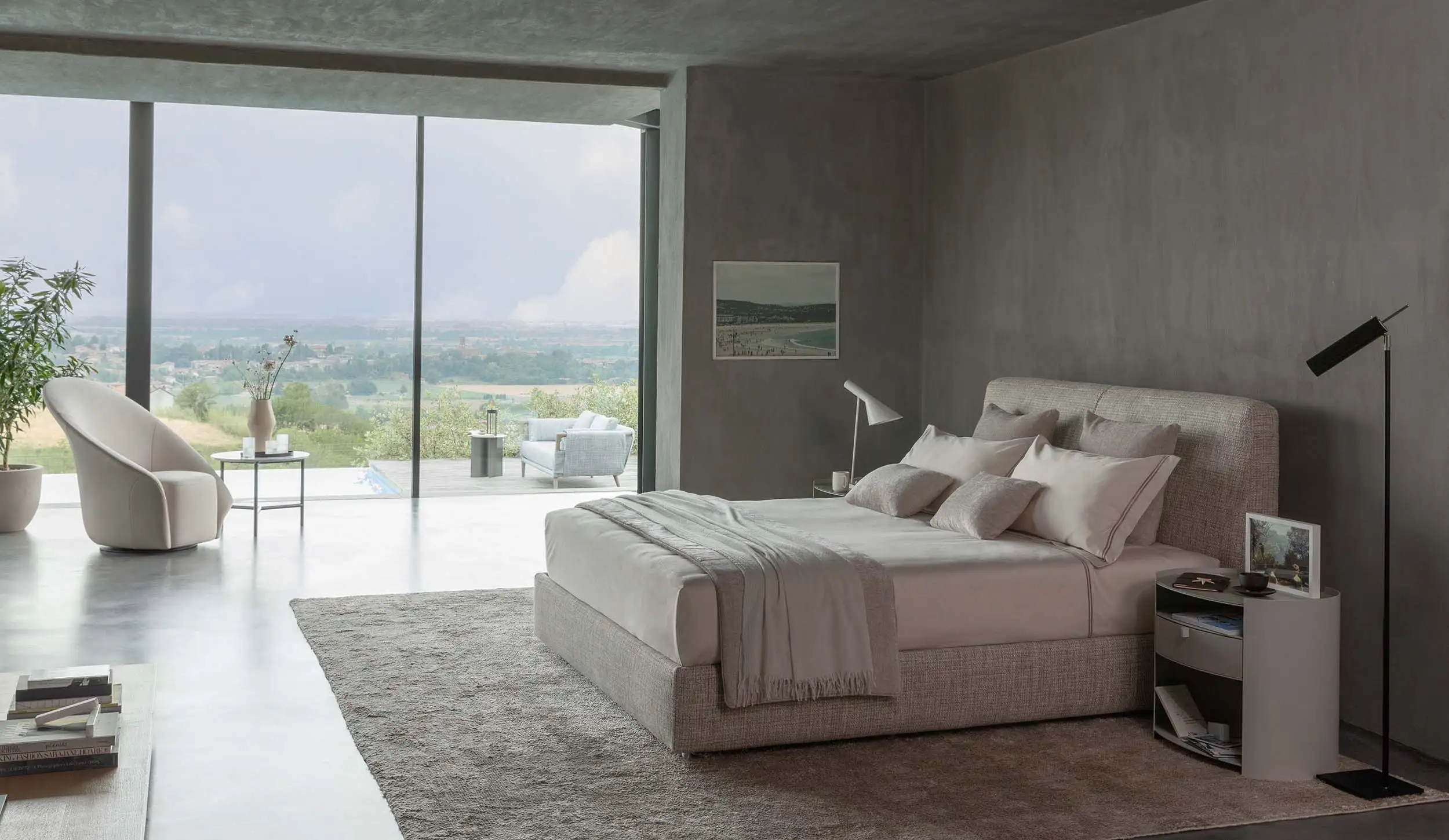
Storage Beds: Smart Space-Savers with Style
For many of us, storage is at a premium in our homes – and the bedroom is no exception. Enter the storage bed, a brilliant innovation that combines a bed frame with built-in storage compartments. The most common type of storage bed is one with a lift-up platform or slatted base: you pull up the entire mattress (usually with the aid of gas lift pistons) to reveal a large storage box inside the bed frame. Another type has drawers integrated into the base, often on the sides or foot of the bed. Essentially, a storage bed capitalizes on the significant square footage a bed occupies by utilizing the under-mattress space (which would otherwise collect dust bunnies or store a lone gym bag or two).
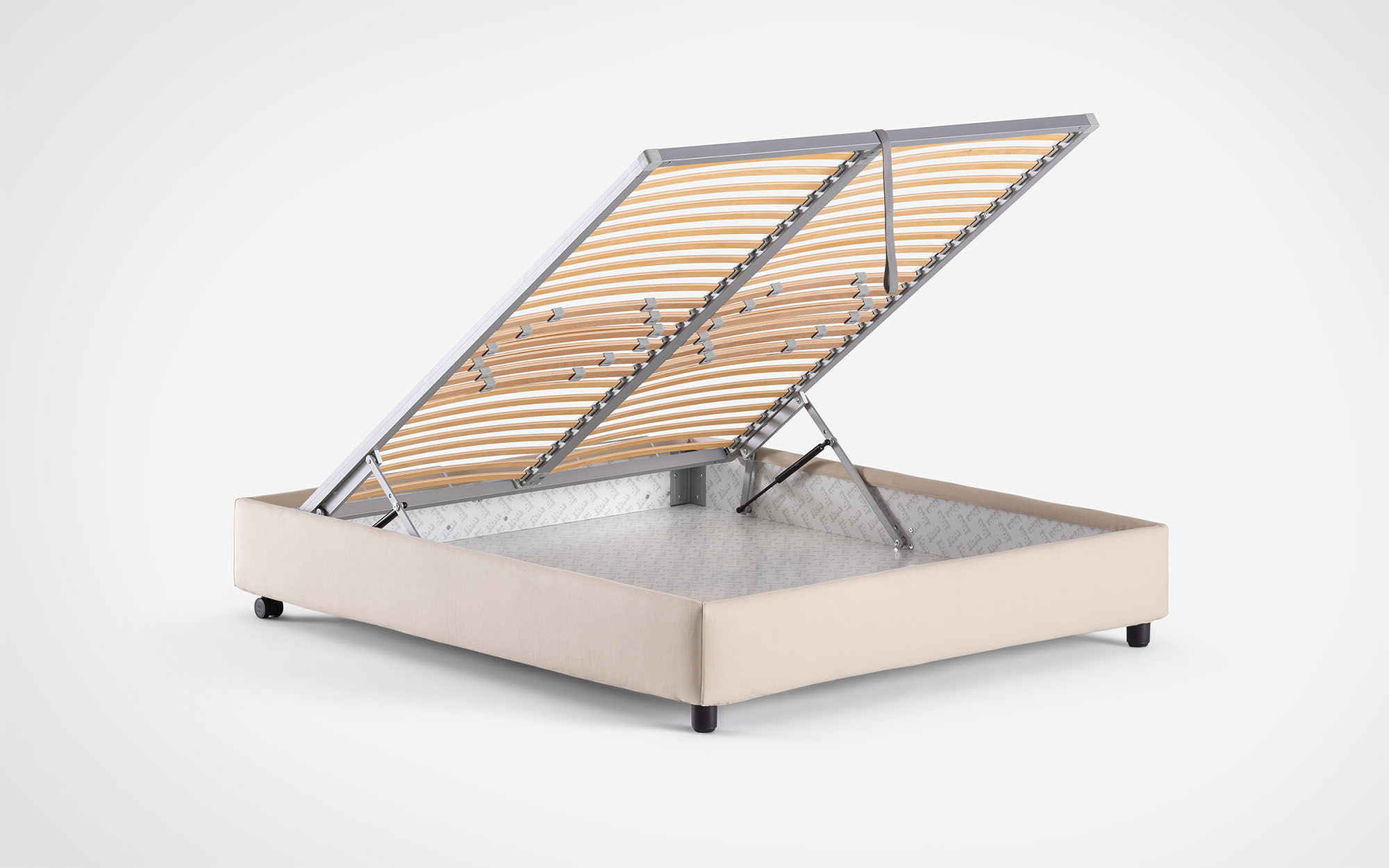
Who it’s best for: Anyone looking to maximize their space can benefit from a storage bed. They are a godsend for studio apartments and small bedrooms, where extra closet or dresser space is limited. They’re also popular in kids’ rooms or guest rooms – places where you might stow away seasonal clothing, bedding, toys, or luggage. Storage beds often appeal to minimalists too: if you want a minimalist bed setup but have lots of stuff, hiding it in the bed base keeps the room clutter-free without adding more furniture. On the practical side, consider the users – lifting a hydraulic mattress frame is easy for most, but someone elderly or with limited strength might prefer drawers to a lift mechanism.
Design & style considerations: Storage beds usually resemble platform beds (since the base is a large box to hold storage). This means they often have a somewhat thicker or taller base than a typical bed. Manufacturers try to keep them stylish by either upholstering them or using attractive wood finishes, so you might not even tell it’s a storage bed until you look closely. If the storage is via lift-up, the exterior look of the bed can be virtually any style (no visible drawers to give it away) – you could have a very sleek bed and secretly it’s hiding storage. If it has drawers, those drawers can be made flush and subtle or highlighted with hardware for a more traditional look.
Flou’s take: Flou has been at the forefront of storage bed design – in fact, part of Flou’s early success with Nathalie was offering it in versions that included a storage base, which was quite novel decades ago. Today, most Flou beds are available with an optional storage base (called “base con contenitore”) without compromising their style.
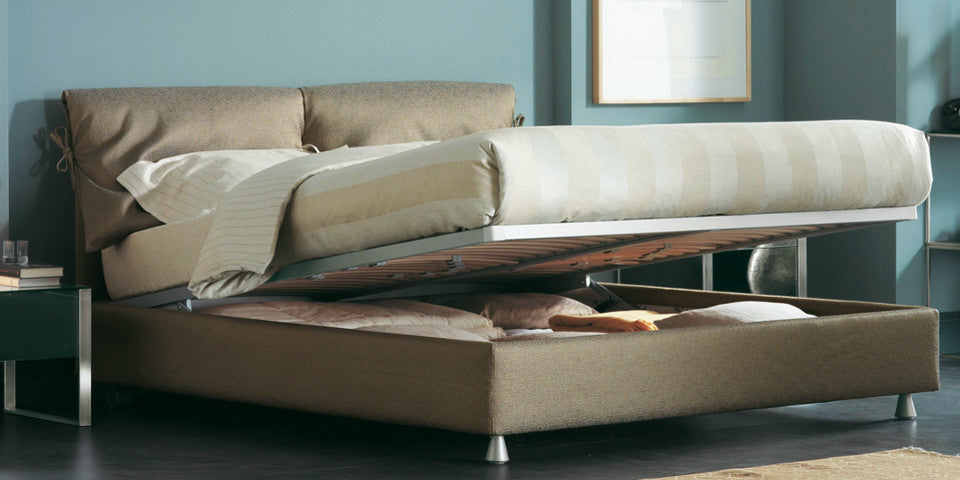
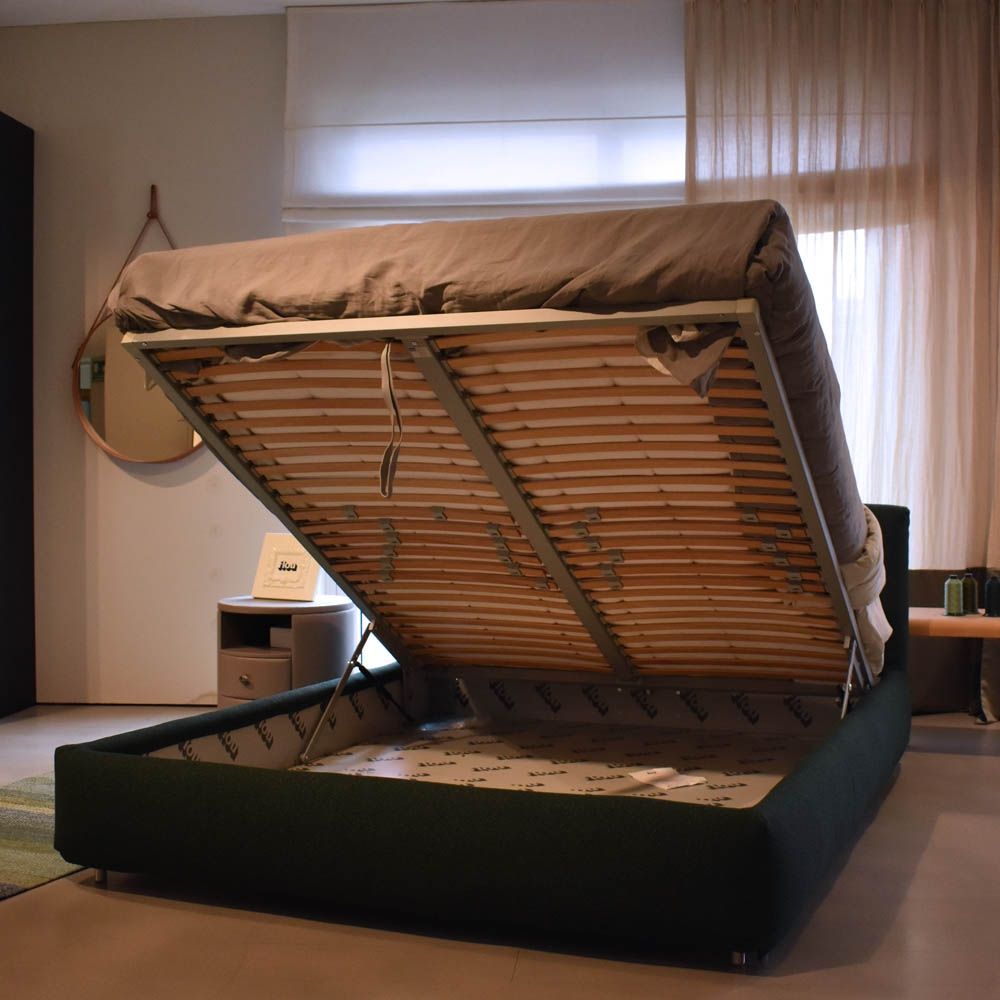
Adjustable Beds: High-Tech Comfort in Discreet Disguise
Gone are the days when “adjustable bed” meant an ugly hospital-like contraption. Modern adjustable beds are all about integrating technology and comfort while keeping a sleek look. An adjustable bed frame allows you to elevate the head, foot, or both portions of the mattress, typically with an electric motor and remote control. This means you can go from lying flat to sitting up in bed at the touch of a button, or raise your legs to a zero-gravity position for pressure relief. Adjustable bases were once marketed mostly for health (and indeed they are great for snorers or those with acid reflux, circulation issues, etc.), but now they’ve become a lifestyle luxury – imagine reading or enjoying breakfast in a perfect upright position without needing a pile of pillows.
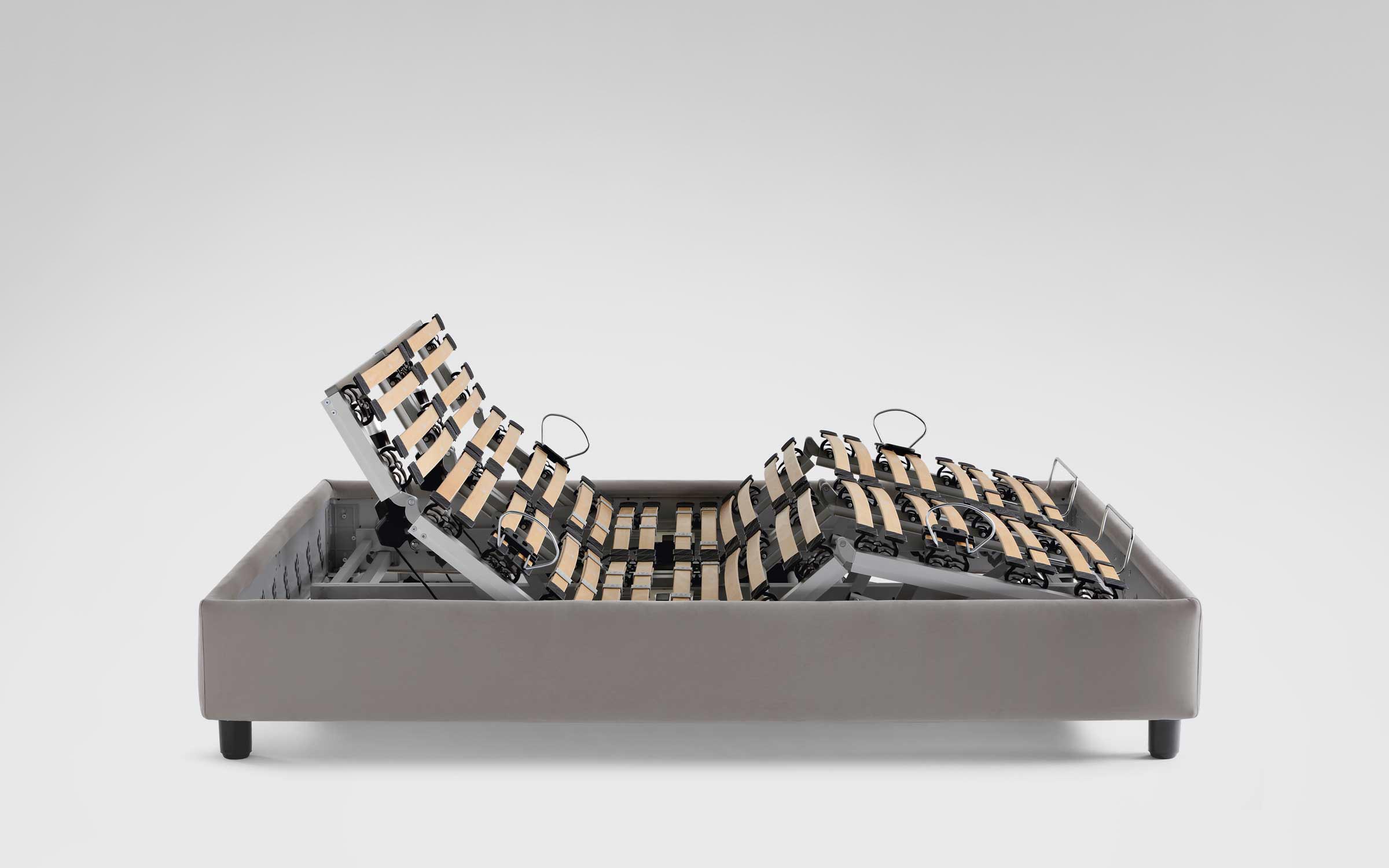
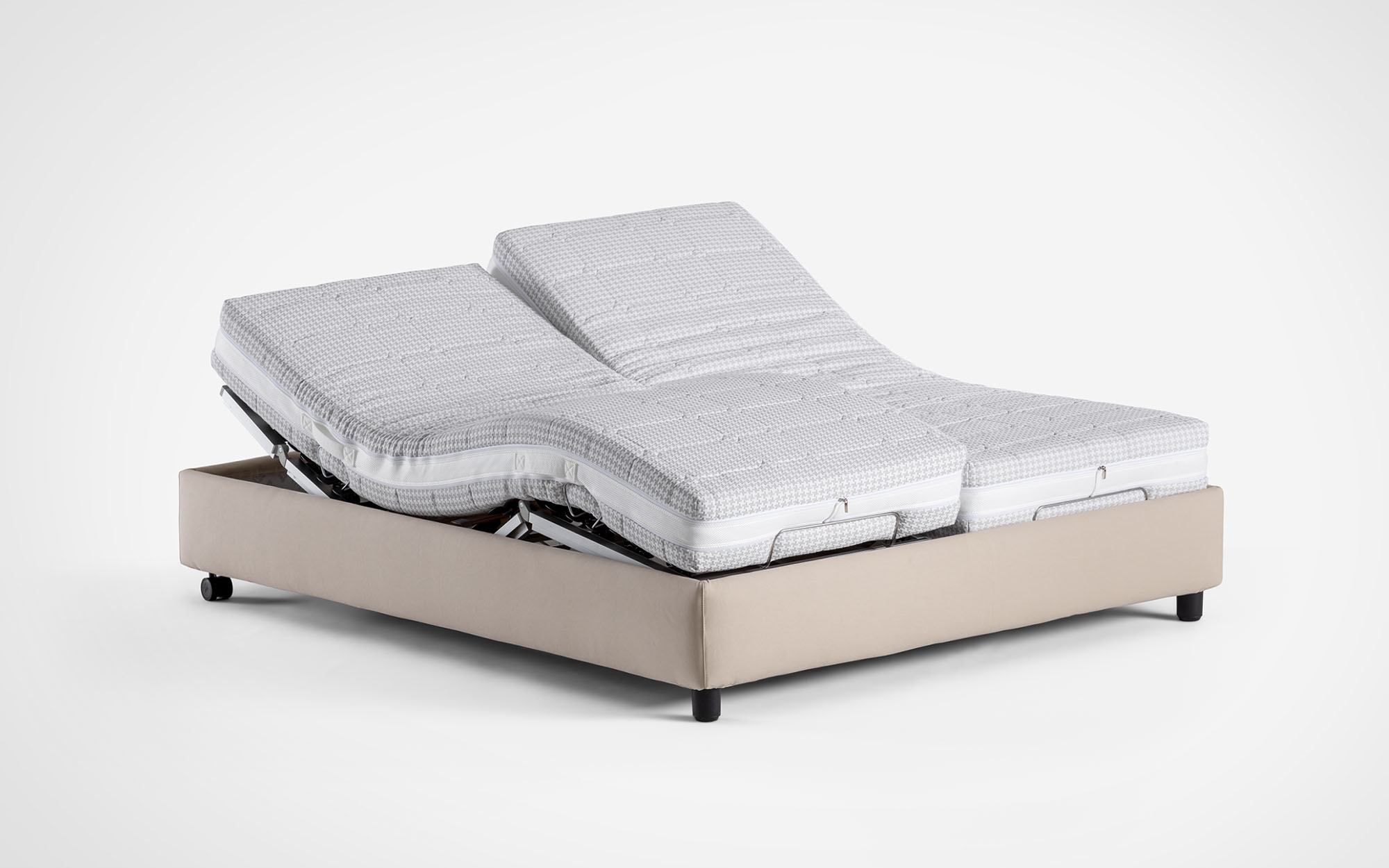
Who it’s best for: Adjustable beds are fantastic for a variety of people. If you enjoy watching TV or reading in bed regularly, being able to adjust your position is a game-changer – far more ergonomic than propping yourself up. Couples with different sleep needs sometimes opt for a split king adjustable base, so each side can move independently. They’re also recommended for those with health concerns: elevating the head can help reduce snoring and acid reflux, while elevating legs can help with swelling or back pain. Elderly folks or those on bedrest appreciate being able to change positions with ease. Essentially, if you want a bed that adapts to your comfort at any given moment, an adjustable base is ideal. On the other hand, if you are a very sound sleeper who doesn’t use the bed for anything but straight sleeping, you might not utilize the features enough to warrant the extra cost. Also, note that adjustable bases pair best with certain types of mattresses (foam, latex, or special adjustable-friendly innersprings) – you need a mattress flexible enough to bend with the base. But most mattress companies offer those options now.
Four-Poster Beds: Stately Style with or without the Canopy
At first glance, a four-poster bed might seem identical to a canopy bed – after all, it also has four posts at the corners. The difference is that a four-poster doesn’t necessarily have the connecting frame at the top or fabric draping; it may simply feature four vertical columns as a design element. In many historical designs, four-poster beds were the predecessors to canopies – sometimes they were left open, or a tester (half canopy) was placed only at the head. In modern usage, we often use four-poster to mean any bed with prominent posts, whether or not there’s an actual canopy. These posts can be slim and square, round and turned (as in spindle or barley-twist posts), or even exaggerated pencil posts (tapered to a fine point). Four-poster beds carry a sense of grandeur and formality, harkening back to grand estates and palaces, but they can also be simplified for a contemporary look.
Trundle Beds: Two-in-One Versatility for Guests and Kids
When space is tight or flexibility is key, trundle beds come to the rescue. A trundle bed is basically a two-in-one bed setup: one slightly larger bed (or sometimes a daybed or sofa-like frame) with a second, lower bed on wheels tucked underneath. The lower bed, called the trundle, usually stows away during the day (or when not needed) and can be rolled out for use at night. Trundles are commonly twin-sized and stored under another twin or daybed, creating twin + twin when both are in use. They are incredibly handy for kid’s rooms (sleepovers) and guest rooms or multipurpose spaces (office by day, guest room by night, etc.). Trundle beds make it easy to accommodate an extra person without dedicating floor space to an additional full-time bed.
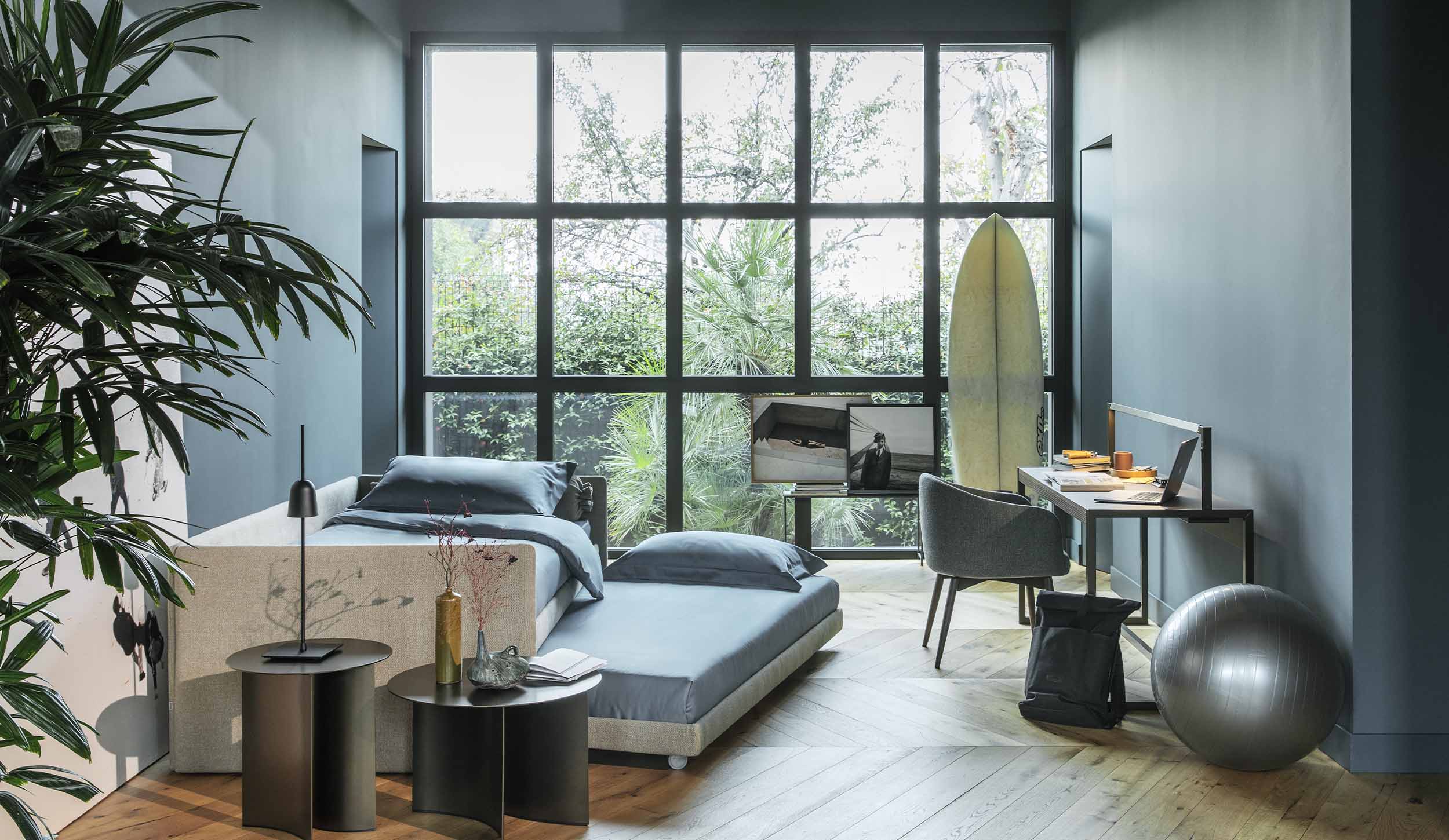
Who it’s best for: Trundle beds are ideal for children’s bedrooms – siblings who don’t both need a bed every night, or an only child who often has friends sleep over. They’re also great in a guest bedroom that doubles as an office or lounge; you might have a daybed that looks like a sofa, but with the trundle, you can sleep two guests when needed. Anyone in a studio apartment might also find a trundle/daybed combo useful for similar reasons (the daybed serving as a couch most of the time). Trundles can even be used in master bedrooms in some cultures or scenarios where a young child might sleep in the parents’ room on occasion (the trundle gives them a separate bed that slides away later).
Design & style considerations: Many trundle beds are designed as daybeds – that means the main frame has side and back panels like a couch, and the trundle slides out from underneath the seat. This way, it serves a dual function aesthetically: by day it’s a chic settee with cushions, by night it’s a bed (or two). Other trundle setups could be a standard twin bed that just has higher legs or a platform allowing a second bed beneath. When planning, you need a bit of clearance to roll out the trundle; ideally the room has enough open area to pull it out completely and use it. Some trundles pop-up to the same height as the main bed (forming, say, a king-size when put together) – these need locking mechanisms to make the two beds level and stable.

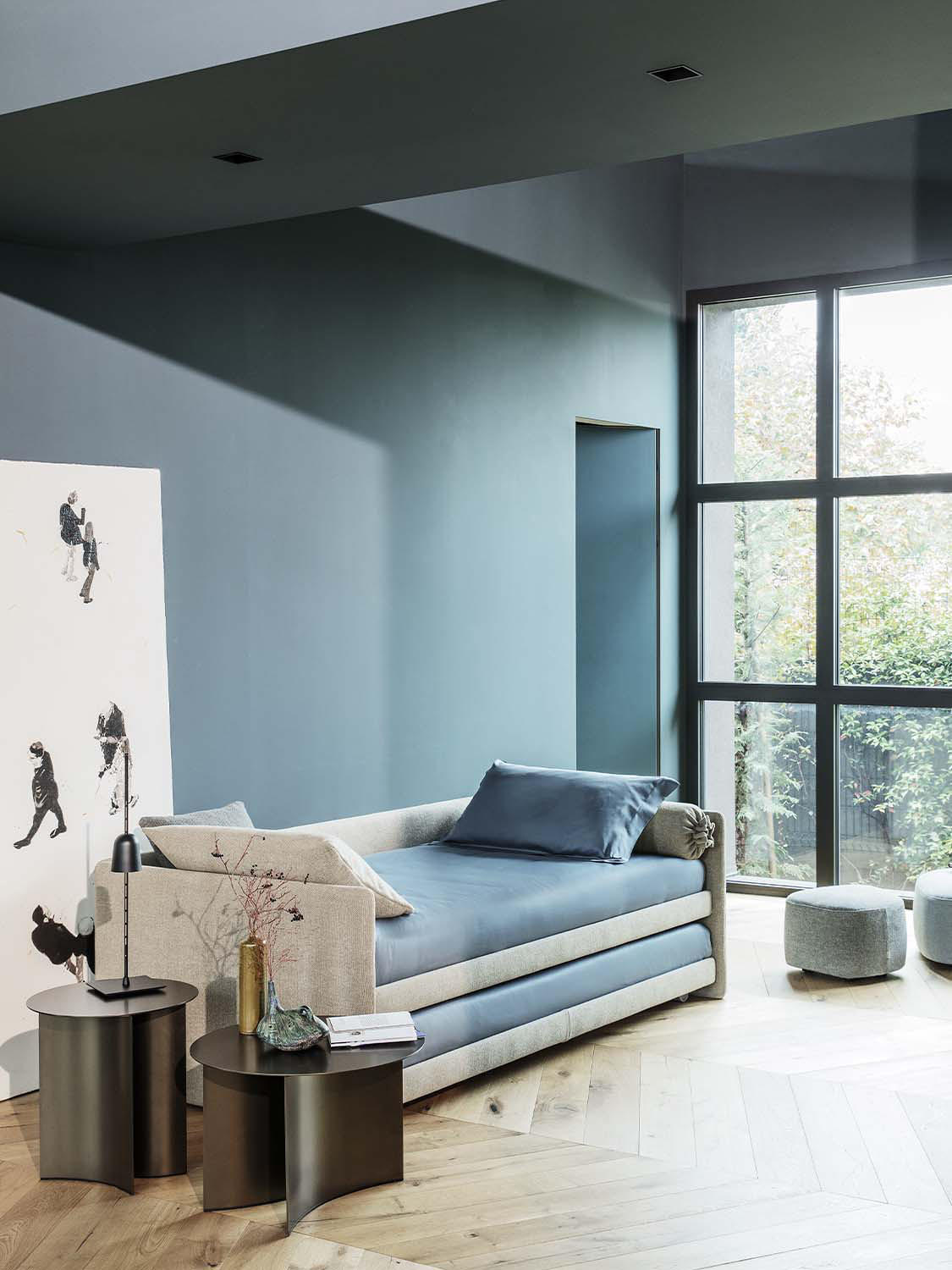
Bunk Beds: Fun and Functional Vertical Sleep Solutions
For families and those who frequently host multiple guests, bunk beds offer a smart way to sleep two (or more) people in the footprint of one bed by stacking sleeping surfaces vertically. A bunk bed traditionally means one bed on top of another, usually twin over twin, though there are variations like twin over full, or even triple bunks in a tier. Bunk beds instantly bring to mind childhood memories for many – they have a sense of adventure (who gets the top bunk?) and are practically a rite of passage for siblings sharing a room. In terms of space-saving, they are unmatched, freeing up floor space that two side-by-side beds would consume.
Who it’s best for: Bunk beds are most commonly used for kids’ rooms – siblings close in age often bunk together, or an older/younger sibling combo might use the lower bunk as a cozy den for the younger. They’re also great for vacation homes or cabins where you want to maximize sleeping spots (e.g., fitting cousins or friends in one “bunk room”). Hostels and dormitories utilize bunk beds for adults, although in a home setting, adults on bunk beds are less common (mostly due to weight limits and comfort climbing). However, a bunk with a full or queen lower bunk can accommodate parents and a child in a pinch or just give a solo adult more room on the bottom. Additionally, bunks can be useful in a guest room if you have families visiting – the kids can take the bunk and the adults a separate bed. One should consider the safety and convenience: top bunks usually have age limits (most recommend only children 6 or older on top). There’s also the matter of making the beds; changing sheets on a top bunk is infamously tricky! If you are past the stage of frequent need for two beds, bunks can often be un-stacked into two separate beds – something to look for if you want longevity from the purchase.
Design & style considerations: Bunk beds historically were plain and utilitarian (think metal bunks in army barracks or simple wood frames). Today, however, they come in all styles. You can find sleek modern bunks with straight lines in a white or black finish, which might blend into a contemporary decor. There are also themed bunks for kids (shaped like a treehouse, a rocket, a castle – you name it!). If going for a stylish look, one approach is a built-in bunk: many interior designers build custom bunks into walls with neat trim work, ladders, and even curtains for each bunk – this can look incredibly high-end (like a cozy ship cabin or a chic hostel). But even off-the-shelf bunk beds can be dressed up. Adding a nice ladder, using matching bedding, and perhaps attaching wall-mounted lamps for each bunk can create a very polished effect.
Conclusion: Choosing the Right Bed Base for Your Lifestyle
By now, it’s clear that the bed base you choose has a profound impact on both the look and utility of your bedroom. With so many unique beds and frame styles available – from low-slung platforms to towering four-posters – the key is to align the bed type with your personal needs and design vision. Here are a few practical guidelines to help you decide:
- Assess Your Space and Ceiling Height: Measure your room dimensions and ceiling. A canopy or four-poster bed needs ceiling clearance and ample room proportions to shine. In a tighter space, a platform or storage bed that keeps a lower profile might be more suitable, making the room feel larger. Always ensure there’s enough space to comfortably walk around the bed and, if applicable, open any drawers or pull out a trundle.
- Consider Who Will Use the Bed: Is it for a primary suite, a child, or frequent guests? For a master bedroom, indulge in that king-size upholstered statement headboard or a modern bed frame king that offers luxury and space. For kids, safety and fun matter – bunk beds (with rails) or trundles provide extra spots for little sleepers. If elderly or mobility-challenged users are involved, an adjustable bed or a standard-height panel bed (not too low, not too high) might be best for ease of access.
- Think About Storage and Multi-Function: If your closet space is lacking, a storage bed can be a game-changer for keeping the room tidy. Likewise, if the room must double as something else (office, playroom, etc.), consider a transformable option like a sofa bed or a trundle/daybed that maintains flexibility. For example, rather than a permanent twin + twin arrangement for guests, a trundle bed or Duetto gives you two beds only when you need them.
- Match Style with Decor Theme: Let the bed complement your interior style. Love minimalism or Scandinavian design? A platform bed with a simple wood bed frame or an unadorned upholstered bed in neutral fabric will set the tone. Prefer a touch of glamour or classic luxury? Look at sleigh beds, tufted upholstered headboards, or canopy beds that create a focal point. If you have a specific color scheme, remember you can often customize finishes and fabrics – Flou, for instance, offers a wide range of fabric/leather options for their beds and various wood/metal finishes to coordinate with your palette.
- Don’t Forget Comfort and Practicality: Ultimately, your bed is about comfort. If you like to sit up and read, an upholstered headboard or at least a bed that allows a pile of cushions is important (a hard sleigh headboard might require a pillow buffer). If you run hot at night, a canopy with heavy drapes might not be ideal as it can trap heat. If you absolutely hate making the bed, consider that a platform with no footboard is easiest to throw a duvet over, whereas a four-poster or sleigh with lots of rails might require more tucking and fussing. Little lifestyle considerations like these ensure you’ll be happy living with the bed day in and day out.
In the end, the “right” bed base is one that fulfills your functional needs while making you feel delighted every time you step into your bedroom. It’s the centerpiece of your personal sanctuary. As we’ve explored, a brand like Flou encompasses all these categories with an eye toward not just style but integrated living – storage where you need it, adjustability where it counts, and quality that lasts. Flou’s collection shows that you can have both beauty and practicality, whether it’s an iconic Nathalie soft frame upholstered bed, a space-savvy Duetto for versatile sleeping arrangements, or a sculptural Iko that elevates the notion of a canopy.
When shopping, take advantage of showrooms (We are located at 154 S Robertson Blvd.) or online galleries to visualize these pieces . And remember internal harmony: if you fall in love with a Flou bed, look at their range of nightstands and accessories that complement it for a cohesive look – many of their designs are part of collections with matching pieces.
Finally, trust your instincts. Your bed is an extension of yourself – if the idea of a certain type excites you (you can’t stop picturing that elegant black bed frame canopy or that cozy upholstered refuge), that’s a sign it may be the one. Marry that passion with the practical tips above, and you’re sure to find “the one” among bed bases. Here’s to nights of restful sleep and mornings waking up in a bed that you truly love!
